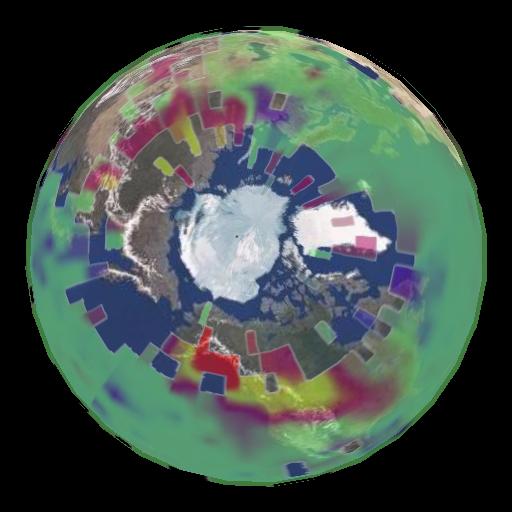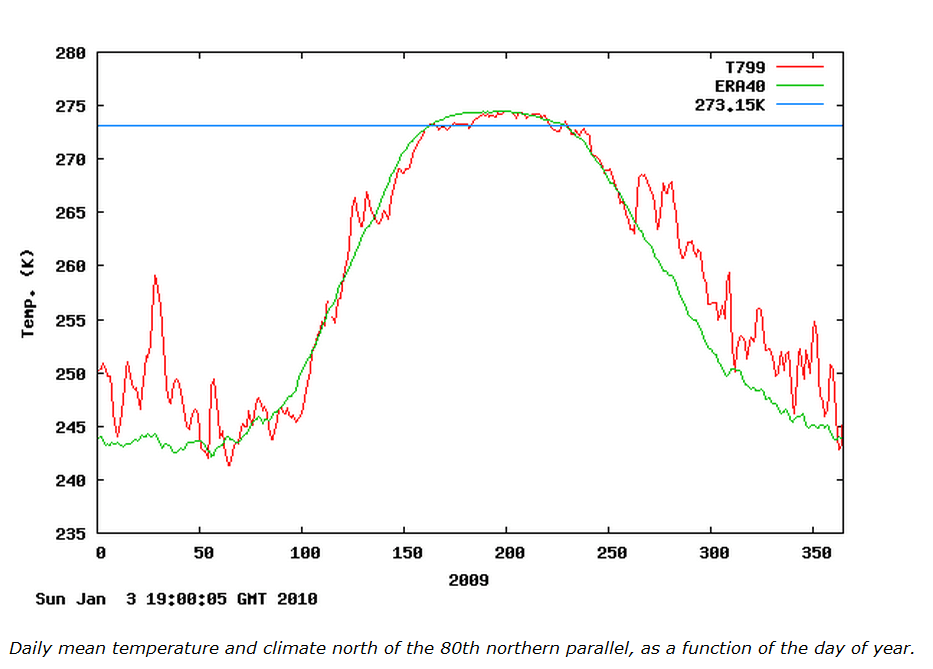10C above normal in Alaska
Here is a Q&A I had with Walt Meier a couple of years ago.
Me: Many GISS stations north of 60 latitude show temperatures 70 years ago being nearly as warm as today. This pattern is seen from Coppermine, Canada (115W) all the way east to Dzardzan, Siberia (124E.) The 30 year satellite record seems to correspond to a period of warming, quite similar to a GISS reported period in the 1920s and 1930s. Is it possible that Arctic temperatures are cyclical rather than on a linear upwards trend?
Walt Meier: No. Analysis of the temperatures does not support a cyclic explanation for the recent warming. The warming during the 1920s and 1930s was more regional in nature and focused on the Atlantic side of the Arctic (though there was warming in some other regions as well) and was most pronounced during winter. In contrast, the current warming is observed over almost the entire Arctic and is seen in all seasons. Another thing that is clear is that, the warming during the 1920s and 1930s was limited to the Arctic and lower latitude temperatures were not unusually warm. The recent warming in the Arctic, though amplified there, is part of a global trend where temperatures are rising in most regions of the earth. There are always natural variations in climate but the current warming in the Arctic is not explained by such variations.
We can see above that Alaska and Siberia were plenty warm in January, 1926. We can also see below that the current Arctic warming is most pronounced during winter. The belief that recent Arctic warming is somehow different than the 1920s warming does not seem to have a very sound basis.
http://ocean.dmi.dk/arctic/plots/meanTarchive/meanT_2009.png




Steve,
I thought you didn’t trust satellite info about temps? And I am sure the satellites in 1926, were not calibrated for the effects of the wide temp changes and low pressures in space on the vacuum tubes (the did not have transistors back then) of the analyzing instruments.
But, maybe that is from a very high balloon?
HadCRUT uses only land based readings.
Seems like the balls you have been juggling are coming from way below
That’s a trip down memory lane. Thanks Steve!
Earth to Walt:
All weather patterns are now and have been regional throughout history. Cyclical variability is probably the best description have. Cycles within cyc;es with different factors driving the various cycles.
Most of what I have read coming out of the NSIDC is attempts to justify their existence. It is a trade mark characteristic for NOAA groups.